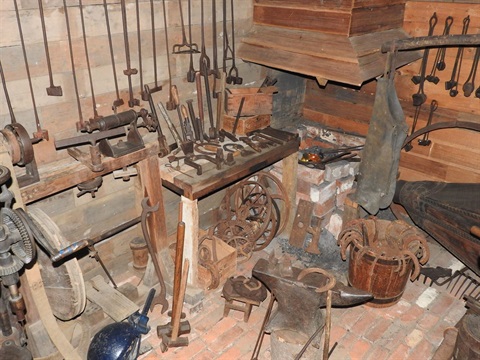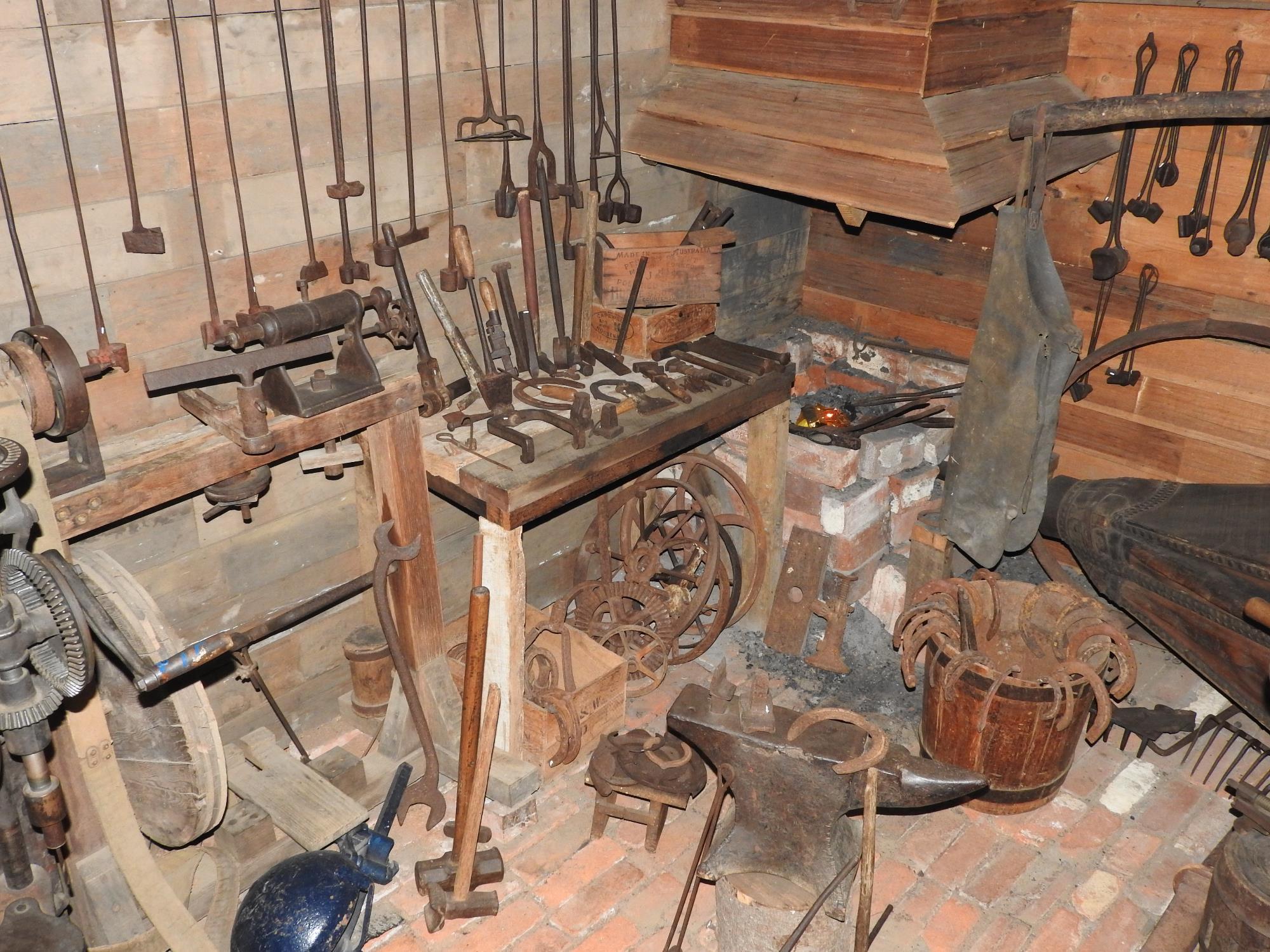Blacksmith, Farrier, Wheelwright

Blacksmithing and wheelwrighting were very important trades in a pioneer community. The blacksmith shod horses, made farm implements, gardening tools, tyres for horse drawn vehicles and would manufacture, in iron, almost anything that was required. The wheelwrights made all the wheels and vehicle frames and the blacksmith made the axles, iron hinges, springs and pins. Coach and carriage building was practised in almost every town up until the 1930s.
The Blacksmiths and Wheelwrights is based on John Mylan’s enterprise. Mylan set up his business as a blacksmith, coachbuilder and undertaker in Burnie in 1868. Mylan did not know it at the time, but he was to have a very prosperous future. Rich tin deposits were discovered at Mount Bischoff just three years later and the mineral boom in Tasmania began. For the first few years all the equipment to the mine and the tin concentrate from the ore mined there had to be hauled on rough tracks in often appalling conditions. The mine was 48 miles inland from Emu Bay on a damp and bleak rain-forested plateau of the West Coast. For John Mylan it was a bonanza. In no time he found a strong demand for his services in building and repairing wagons and carts and making and replacing wheels. His business expanded rapidly and he had no less than six forges operating by the mid 1870s.
In 1889, John Mylan sold the carriage building part of his business to Samuel Bird. Some of the wheelwrighting equipment in this display, including the large commercial-sized bellows, the anvil, and a wheelwright’s lathe, as well as unused and unfinished cartwheel boxes, spokes and felloes were salvaged from the building where Samuel Bird had his workshop before it was demolished in the late 1950s.
